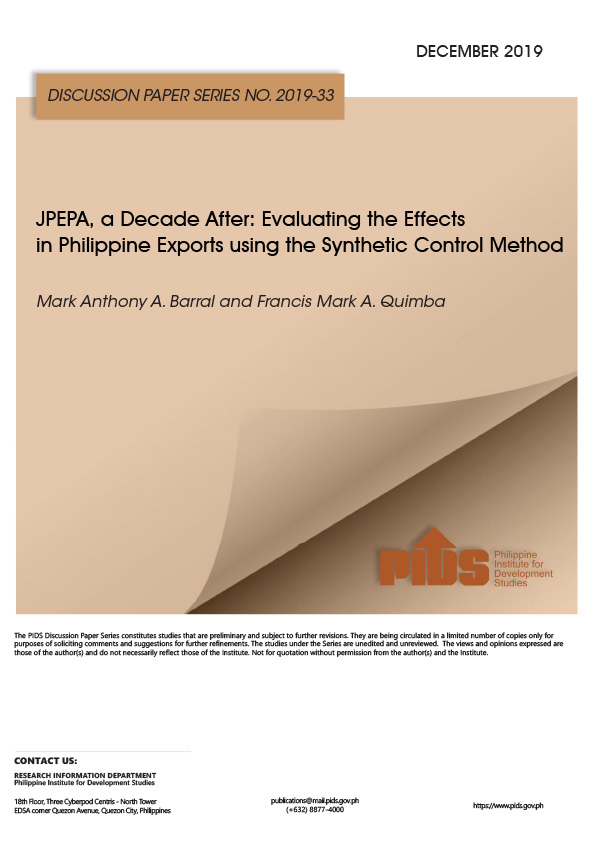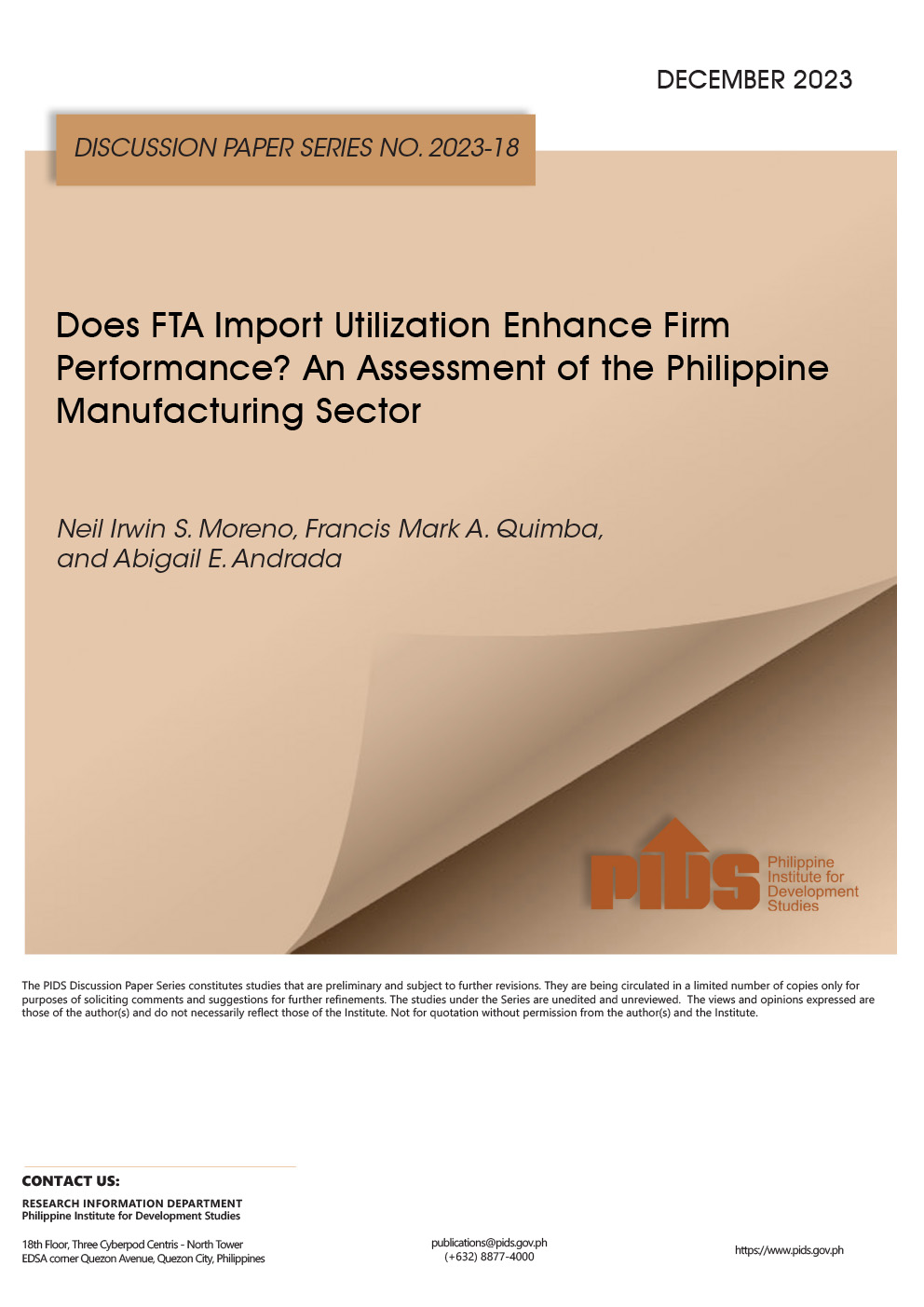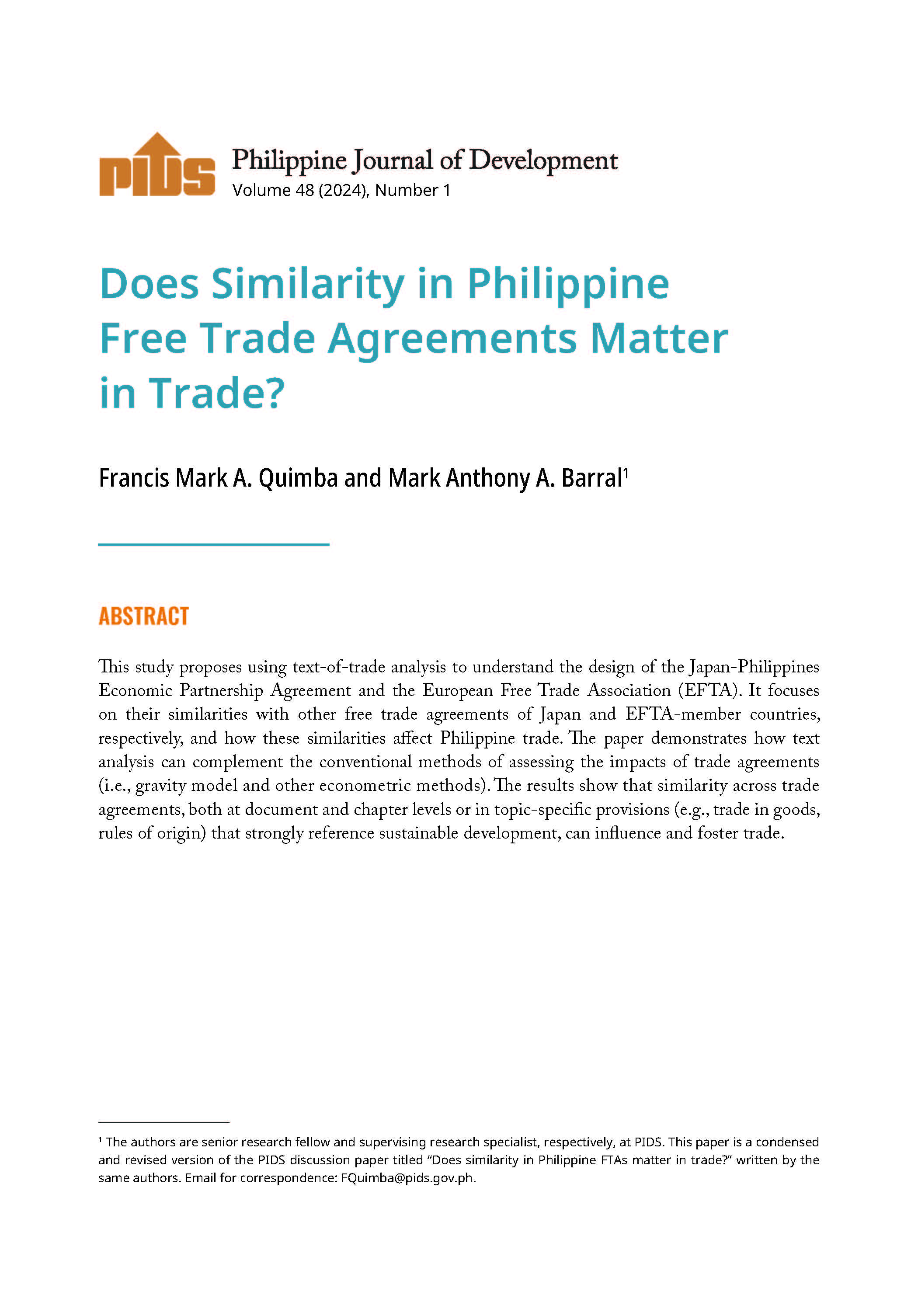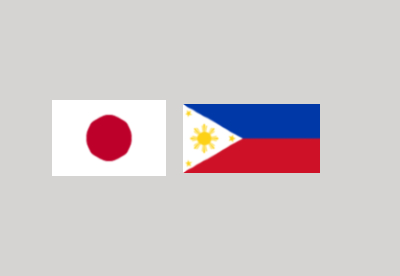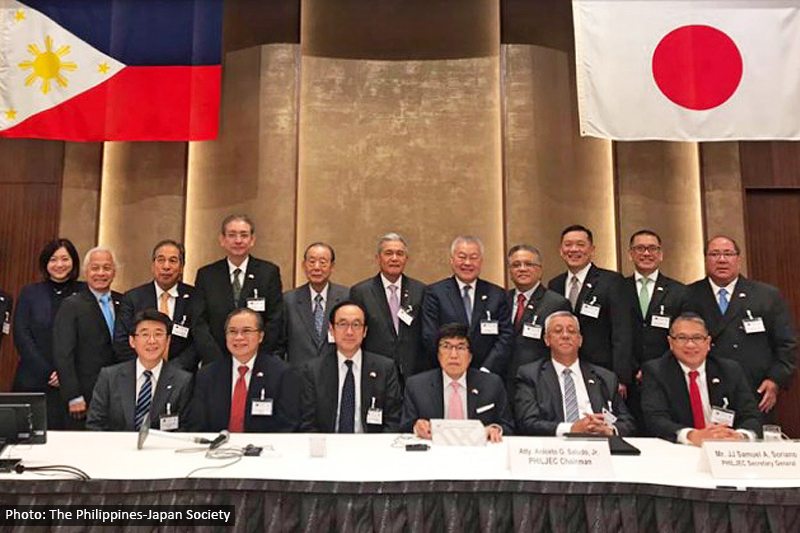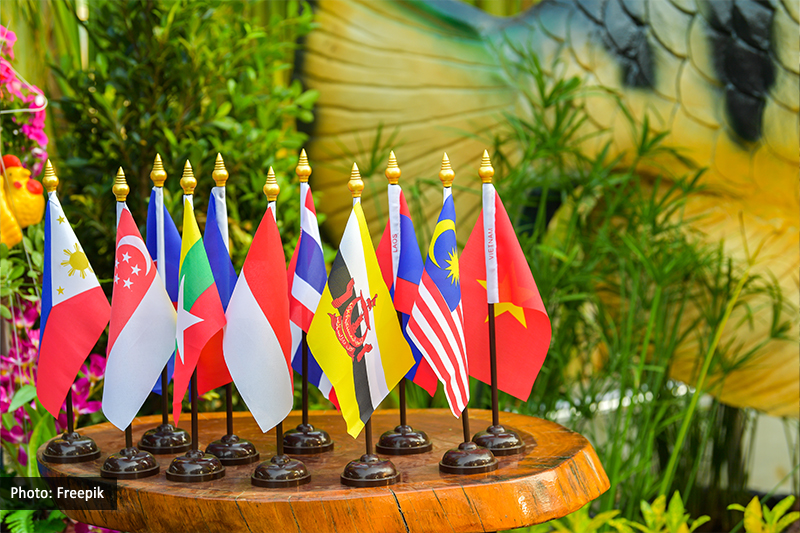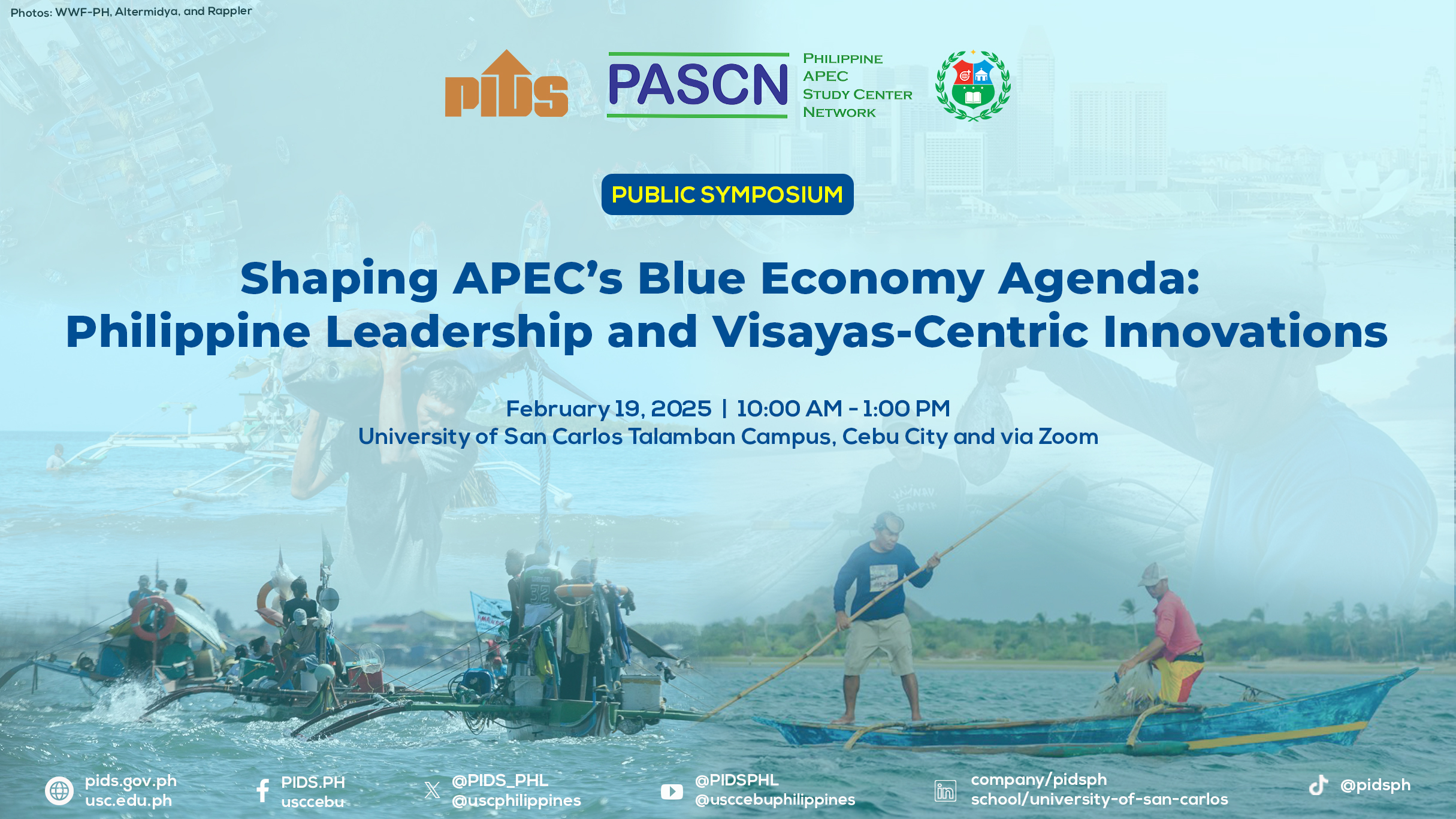Free trade agreements (FTAs) and regional trade agreements (RTAs), as a national policy, have proliferated in the recent decades as countries perceived them to effectively reduce trade barriers--helping expand market access, protect local markets, and enhance efficiency and productivity of domestic industries. Such preferential trade agreements, however, can have advantages or disadvantages. The Japan-Philippines Economic Partnership Agreement, which is the first and only FTA of the Philippines, was entered into in order to facilitate and promote free transborder flow of goods, services, capital, and people between the two countries. Whether it was able to deliver its intended benefits and what determined its success are two focal national interests. Evaluating such agreement can be done through detailed examinations of economic conditions before and after the implementation. This requires a comparison group whose outcomes can be contrasted with the outcome of the agreement to separate the effects that are attributable to this agreement from the effects of other factors. This, however, is a rigorous and difficult task and existing approaches fall short in providing sufficient measures. This paper explores the use of Synthetic control method (SCM) to understand the effects of JPEPA on Philippine exports without being hampered by the limitations in existing approaches. The results generally reveal that Philippine exports benefited from the agreement as determined by the difference in the actual exports and the counterfactual exports. Investigating the effects at the sector-level, however, yield varying results.
Citations
This publication has been cited 3 times
- Ibanez, Jenina. 2020. Japan trade deal failed to benefit PHL machinery. BusinessWorld.
- Ordinario, Cai. 2020. ‘PHL failed to use Jpepa to expand market access’. BusinessMirror.
- Roy Stephen C. Canivel . 2021. PH puts foot down in trade renegotiation with Japan. Inquirer.net.

